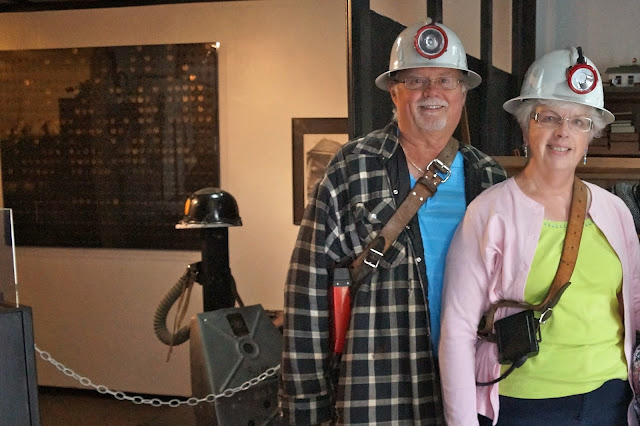Our next destination was Waterton Lakes National Park where we setup in the hot sun.
Red Rock Canyon is a popular spot to cool off and explore all the shades of red sandstone.
Wildflowers abounded in the mountains.
Buffalo roam freely in a large enclosed field much as they did for centuries until Europeans arrived.
The iconic Prince of Wales Hotel, with it's million dollar view, stands sentinel on the hill above Upper Waterton Lake.
Immediately behind the campground Cameron Falls thunders down the cliff and sprays visitors.
The guided boat tour down the lake to Glacier National Park (USA) is full of history and information about the area.
The tour crosses the longest undefended border in the world.
However, there are US Border Guards at the viewpoint making sure that tourists return to the boat or have appropriate documentation to enter the trails in the US.
The viewpoint is very peaceful and full of information about the wildlife along the lake.
In the townsite First Nations dancers demonstrated their skill and grace.
Viewers were invited to join in the finale and move to the music.
Bears Discover Oil?!
Aboriginal peoples used oil as a medicine. They noticed that bears rolled in oil seeps to rid themselves of insects.
When Europeans arrived they drilled the first oil well in Western Canada but it was in a remote, rugged area and was not commercially successful. Many people started with high hopes for fame and fortune but access was too difficult.
As we left Waterton we again passed one of today’s solutions to clean energy.
The Crowsnest Pass has a long, chaotic coal mining history – the danger of cave-ins, explosions, strikes - with people just trying to make a decent living.
Our first stop was The Frank Slide. The side of the mountain is still very dramatic but time has softened the debris, although rocks continue to slide down the mountainside.
In hard hats and headlamps the Bellvue Mine Tour took us into the dark, mysterious world of coal in the early 1900s.
Leitch Collieries (coal mine) was an impressive site with stone buildings from a local quarry and over 100 coking ovens from imported brick.
Hillcrest Mine Disaster was the worst in Canadian history killing 189 men, most of them in their 20s or 30s.
Our travels took us to beautiful lakes and mountains and the stories from inside the mountains.























No comments:
Post a Comment